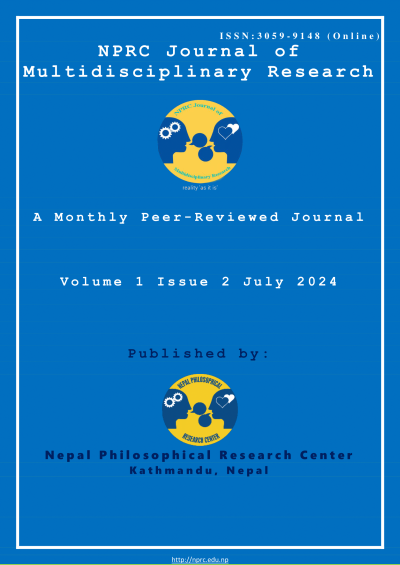Credit Risk Management and Profitability of Nepalese Commercial Banks
DOI:
https://doi.org/10.3126/nprcjmr.v1i2.69294Keywords:
Bank, Credit, Nepalese, Performance, RiskAbstract
Banks are an essential component in the economy in the process of creating economic growth in both developed and developing countries. In order to contribute to its commitment to promote growth, banks should be able to lock in on the stability of their financial performance. This study has examined the relationship of credit risk management on performance of Nepalese commercial banks. The descriptive, Correlational research design and review have been adopted for the study. The pooled data of ten commercial banks out of total population of twenty commercial banks operating up to January 2024 has been analyzed. The findings indicate that specific financial indicators, such as credit to deposit ratio, non-performing loan, and interest spread rate, play crucial roles in influencing ROA and ROE. Major issue on non-performing loan and impairment cost were highlighted. Identified that gross domestic product growth rate has an insignificant positive impact on profitability of commercial banks in Nepal.
These insights contribute to a deeper understanding of the dynamics within the banking sector, offering valuable implications for stakeholders and policymakers.
Downloads
Downloads
Published
How to Cite
Issue
Section
License
Copyright (c) 2024 The Author(s)

This work is licensed under a Creative Commons Attribution-NonCommercial 4.0 International License.
This license enables reusers to distribute, remix, adapt, and build upon the material in any medium or format for noncommercial purposes only, and only so long as attribution is given to the creator.





